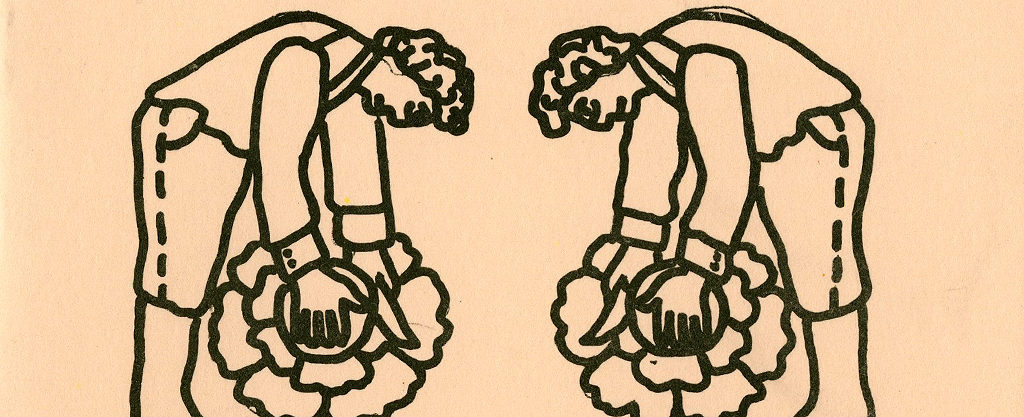
Students will learn about Mexican Americans’ struggle to keep and create space and place in their community. Students will learn about Juárez-Lincoln University/Cultural Center and its role in local Mexican American history. Students will create a plan for their own community educational/art space including pedagogical strategies, programming, branding, and facilities. The primary sources presented here are from the Juárez-Lincoln University Records, 1969-1978.
Date Range: 1969-1978
Grade levels: 9-12
Country: United States
Course Subjects: Borderland Studies; Mexican American & U.S. Latinx Studies; U.S. History: 1887-present
Topics: Texas history; Mexican American history; community education; Chicano cultural arts; Austin, TX; gentrification; cultural memory
Teaching Time Frame: 8, 60 minute lessons
Guiding Questions
- How is space distributed in a community?
- How do educational and cultural centers work to create and distribute community-based knowledge?
- How can we re-imagine communities to be inclusive and to honor the cultural heritage of those who live there?
Summative Activities
- Students will create a plan for their own community educational/art space including pedagogical strategies, programming, branding, and facilities.
Relevant Teaching Standards
Lesson 1-5
TEKS Guidelines
- Ethnic Studies: Mexican American Studies
- (c)-(4)-(A) – The student understands the causes and impact of the Mexican American civil rights movement from the 1930s to 1975. The student is expected to explain the significance of the following events as turning points relevant to Mexican American history: U.S. entry into World War II, Bracero Program, Longoria Affair, Operation Wetback, Hernández v. Texas, Brown v. Board of Education, Civil Rights Act of 1964, Voting Rights Act of 1965, Farmworkers strike and boycott, and establishment of La Raza Unida Party.
- (c)-(6)-(a) – The student understands the impact of geographic factors on major events related to Mexican Americans. The student is expected to locate places and regions of cultural and historical significance in Mexican American history.
- (c)-(9)-(D) – Analyze the connotations and histories of identity nomenclature relevant to Mexican Americans such as Mexican, Spanish, Hispanic, Latina/o, Chicana/o, illegal, undocumented, Mexican American, American Mexican, or simply American.
- (c)-(10)-(A) – The student understands the relationship between Mexican American artistic expression and the times during which the art was created. The student is expected to describe how the characteristics and issues of Mexican American history have been reflected in various genres of art, music, film, and literature.
CS Framework
- Geography
- D2.Geo.2.9-12. Use maps, satellite images, photographs, and other representations to explain relationships between the locations of places and regions and their political, cultural, and economic dynamics.
- D2.Geo.3.9-12. Use geographic data to analyze variations in the spatial patterns of cultural and environmental characteristics at multiple scales.
- D2.Geo.5.9-12. Evaluate how political and economic decisions throughout time have influenced cultural and environmental characteristics of various places and regions.
- D2.Geo.6.9-12. Evaluate the impact of human settlement activities on the environmental and cultural characteristics of specific places and regions.
- D2.Geo.8.9-12. Evaluate the impact of economic activities and political decisions on spatial patterns within and among urban, suburban, and rural regions.
- History
- D2.His.1.9-12. Evaluate how historical events and developments were shaped by unique circumstances of time and place as well as broader historical contexts.
- D2.His.6.9-12. Analyze the ways in which the perspectives of those writing history shaped the history that they produced.
- D2.His.14.9-12. Analyze multiple and complex causes and effects of events in the past.
Lesson 6-8
TEKS Guidelines
- Ethnic Studies: Mexican American Studies
- (c)-(12)-(B) – The student applies critical-thinking skills to organize and use information acquired from a variety of valid sources, including electronic technology. The student is expected to analyze diverse points of view related to contemporary Mexican American issues.
- (c)-(12)-(C) – Create a written and/or oral presentation on a contemporary issue or topic relevant to Mexican Americans using critical methods of inquiry.
- (c)-(12)-(D) – Analyze information by sequencing, categorizing, identifying cause-and-effect relationships, comparing, contrasting, finding the main idea, summarizing, making generalizations and predictions, and drawing inferences and conclusions.
CS Framework
- Taking Informed Action
- D4.6.9-12. Use disciplinary and interdisciplinary lenses to understand the characteristics and causes of local, regional, and global problems; instances of such problems in multiple contexts; and challenges and opportunities faced by those trying to address these problems over time and place.
- D4.7.9-12. Assess options for individual and collective action to address local, regional, and global problems by engaging in self-reflection, strategy identification, and complex causal reasoning.
Downloads
Rights Statement
Creator: Cassie Smith, Doctoral Candidate, Anthropology, University of New Mexico (Fall 2018)
Date: 2018-04-25
This unit is under a Creative Commons Attribution-NonCommercial-ShareAlike 4.0 International Public License (“Public License”). This license lets others share, remix, tweak, and build upon the work non-commercially, as long as they credit the creators and license their new creations under the identical terms.
